Introduction
Do Robins Migrate In The Winter: The American Robin, known for its cheerful song and vivid orange-red breast, is a migratory bird that holds a special place in the hearts of many. These birds are commonly associated with the onset of spring, arriving in northern regions with the promise of warmer days ahead. However, the question of their winter whereabouts remains a subject of curiosity and confusion.
To unravel the mystery of whether robins migrate in the winter, we must delve into the intricate patterns of their behavior, ecology, and physiology. This journey will take us from their summer breeding grounds to their potential wintering destinations, shedding light on the factors that influence their migratory decisions. While some robins do indeed migrate south for the winter, it is crucial to recognize that their winter habits are far more nuanced than a simple north-to-south journey. For some robins, winter means embracing a nomadic lifestyle within their breeding range, while others undertake lengthy migrations to find milder climates.
This exploration of the winter habits of American Robins will reveal the fascinating strategies these birds employ to survive the challenges of winter. It will also underscore the critical role seasonal movements play in their lives, providing insights into the larger ecological picture of avian migration. Join us on this journey through the world of robins in winter, where the science of migration meets the wonder of the natural world.
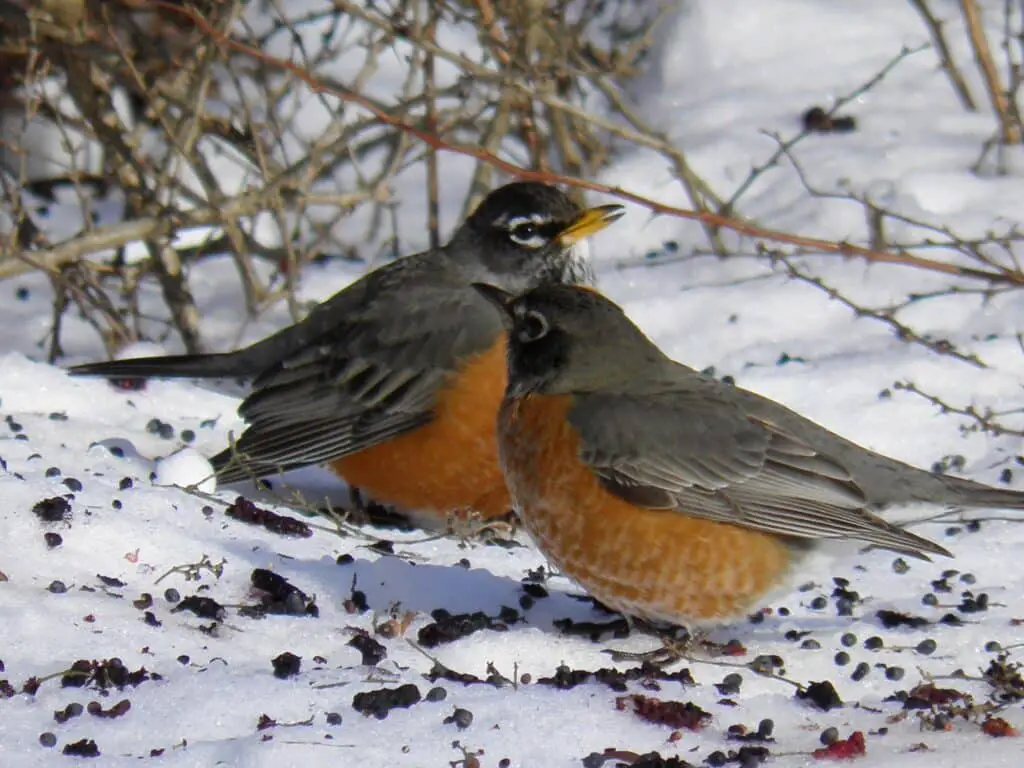
Where do robins go in the winter?
Migration. Resident or short-distance migrant. Robins can be found year round almost anywhere south of Canada. Birds that breed from Canada to the north slope of Alaska leave in fall for the U.S. Some robins winter as far south as the Southwest, Mexico, and the Gulf Coast.
The American Robin (Turdus migratorius)
The American robin, often simply referred to as the “robin,” is a well-known bird species in North America. Recognized by its orange-red breast and grayish-brown upperparts, robins are often associated with the arrival of spring when they return to their breeding grounds. However, they are migratory birds that exhibit distinct seasonal movements.
Summer Breeding and Nesting
During the spring and summer, robins are commonly found throughout North America, from southern Canada to Mexico. They prefer open woodlands, gardens, parks, and suburban areas, where they build nests and raise their young. Robins are known for their earthworm-rich diet and are often seen hopping along lawns, searching for insects and worms.
Winter Diet
Robins adapt their diet during the winter months, shifting from their insect-heavy summer fare to a diet rich in berries and fruit. They are particularly fond of holly berries, juniper berries, and various types of fruit that are available in abundance during the winter season. This dietary shift is crucial for their survival during the colder months.
Do all robins migrate in the winter?
As long as there is food available, American Robins may stay north in cold climates. Photo by Chuck Porter via Birdshare. We do get a lot of questions from people surprised by seeing American Robins in winter. But although some American Robins do migrate, many remain in the same place year-round.
Partial Migration
Robins exhibit a phenomenon known as “partial migration.” This means that while many robins do indeed migrate during the winter, not all of them embark on long journeys to escape the cold. The decision to migrate or remain in their current location is influenced by several factors, including geographical location, food availability, and weather conditions.
Migratory Robins
Robins residing in the northernmost regions of their breeding range, such as Canada and the northern United States, often face harsh winters with limited food resources. Consequently, a significant portion of these northern robins migrates southward in search of milder climates and readily available food. They can be found in places like the southern United States and Mexico during the winter.
Some robins that breed in mountainous regions also migrate to lower elevations during the winter. The lower altitudes provide them with better access to food and more moderate temperatures.
Do female robins migrate in winter?
Female robins are more likely to migrate than males, perhaps because the males maintain their territorial instincts over the winter months and prefer to stay put. The European robin is a cold-hardy bird, and migration is likely motivated by food availability.
Partial Migration
American robins, including females, exhibit partial migration. This means that while some individuals migrate during the winter, others stay in their breeding areas or move only short distances. The decision to migrate is influenced by various factors, including geographical location, weather conditions, and food availability.
Non-Migratory Female Robins
In regions where winter conditions are milder and food remains relatively abundant, some female robins choose not to migrate. This behavior is often observed in the southern United States and parts of Mexico, where the climate is more temperate, and food sources are readily available throughout the year.
Nest Site Familiarity
Female robins that have successfully raised their young in a particular area might be more inclined to stay in the same location during the winter. They are familiar with the local conditions and may find it advantageous to stay put.
Do robins mate in winter?
American robins breed in the spring shortly after returning from their winter range. The breeding season extends from April through July.
The Breeding Season
American robins, scientifically known as Turdus migratorius, are migratory birds that typically breed in the spring and early summer. Their breeding season is primarily triggered by increasing daylight hours and the availability of insects and other invertebrates, which are essential food sources for their chicks.
Winter Behavior
During the winter months, robins exhibit different behaviors. They often gather in flocks and focus on finding food, primarily fruit and berries, as insects become less abundant. Their focus during this time is primarily on survival and maintaining their energy levels to endure the cold weather.
Delayed Nesting
While robins do not typically mate in the winter, there are instances of delayed nesting in late winter or early spring in regions with mild winters. These early breeders might take advantage of favorable weather conditions and food availability to start nesting earlier than usual.
Is A robin a winter bird?
The Robin is only really seen in winter and because of this, it has become a staple of Christmas cards and decorations.
Non-Migratory Robins
Contrary to the idea that all robins migrate for the winter, some individuals, particularly those in regions with milder winter climates, choose not to migrate at all. These non-migratory robins remain in their breeding territories or move only short distances in search of food.
Winter Diet
Robins adjust their diets during the winter months to adapt to changing food availability. While they primarily feed on earthworms, insects, and other invertebrates during the warmer months, their winter diet shifts to a reliance on berries, fruit, and small fruits like crabapples. This dietary change is essential for their survival during cold winters when insects are scarce.
The American Robin (Turdus migratorius)
The American robin, often referred to simply as the “robin,” is a well-known bird species in North America. Recognizable by its distinctive appearance, robins are known for their red-orange breasts and grayish-brown plumage. They are widespread across the continent and exhibit diverse behaviors throughout the year.
What does robin say during the winter?
Robin sang sweetly, In the autumn days, “There are fruits for everyone, Let all give praise”. In the cold and wintry weather Still hear his song, “Somebody must sing,” said Robin “Or winter will seem long.” When the spring came back again, He sang, “I told you so” “Keep on singing through the winter It will always go.”
Contact Calls
Robins use contact calls to communicate with one another throughout the year. These calls are often softer and less melodious than their spring songs. During the winter, robins may use contact calls to maintain group cohesion within winter flocks. These calls help them stay in contact with other robins as they forage for food.
Alarm Calls
Robins are vigilant birds and will emit alarm calls when they perceive a potential threat. These calls serve to alert other robins in the area to the presence of predators. Winter robins will continue to use alarm calls to warn each other of danger.
Quiet Feeding Chatter
While foraging during the winter, robins may engage in quiet feeding chatter. This soft, intermittent vocalization may help coordinate movements within a foraging group. It is less conspicuous than their spring songs and serves a practical purpose.
Spring Preview
As winter begins to wane and the days grow longer, you may notice an increase in robin vocalizations. This is often a precursor to the approaching breeding season. Robins will gradually ramp up their singing as spring draws near, heralding the return of their full-throated melodies.
Why is the bird called robin?
In the 15th century, when it became popular to give human names to familiar species, the bird came to be known as robin redbreast, which was eventually shortened to robin. As a given name, Robin is originally a smaller form of the name Robert.
European Roots
The name “robin” has its roots in Europe, where it was originally used to refer to a completely different bird—the European robin (Erithacus rubecula). The European robin is a small, red-breasted bird that bears a superficial resemblance to the American robin.
Early American Colonists
When European settlers arrived in North America, they encountered a bird with a reddish-orange breast that reminded them of the familiar European robin. These early colonists began calling the new bird “robin,” despite the fact that the two species were not closely related.
Naming by Association
The name “robin” for the American bird was likely a case of naming by association. The settlers saw a bird with a similar coloration to the European robin and gave it a name they were familiar with. This practice of naming new species after familiar ones from their homeland was not uncommon among early naturalists.
Is robin a happy bird?
Answer: Yes Robin is a happy bird because he sings everyday makes him happy and he is also happy by the nature.
The Perception of Happiness
The notion of robins being “happy” birds primarily arises from their association with the arrival of spring and the renewal of life. Their joyful songs and vibrant red-orange breasts can indeed evoke a sense of happiness and hope in people. However, it’s essential that attributing human emotions to birds may be anthropomorphic, as birds do not experience emotions in the same way humans do.
Singing Behavior
Robins are known for their melodious songs, which they use for various purposes, including establishing territory, attracting mates, and communicating with other robins. While their songs may sound joyful to us, they serve practical functions for the birds. Singing helps define their territory and maintain social bonds, rather than necessarily reflecting their emotional state.
Seasonal Adaptations
Robins exhibit different behaviors and vocalizations depending on the season. In the spring and summer, when they are breeding, their songs are more prominent as they communicate with potential mates and establish territories. In contrast, during the winter, their singing decreases as they focus on foraging and survival.
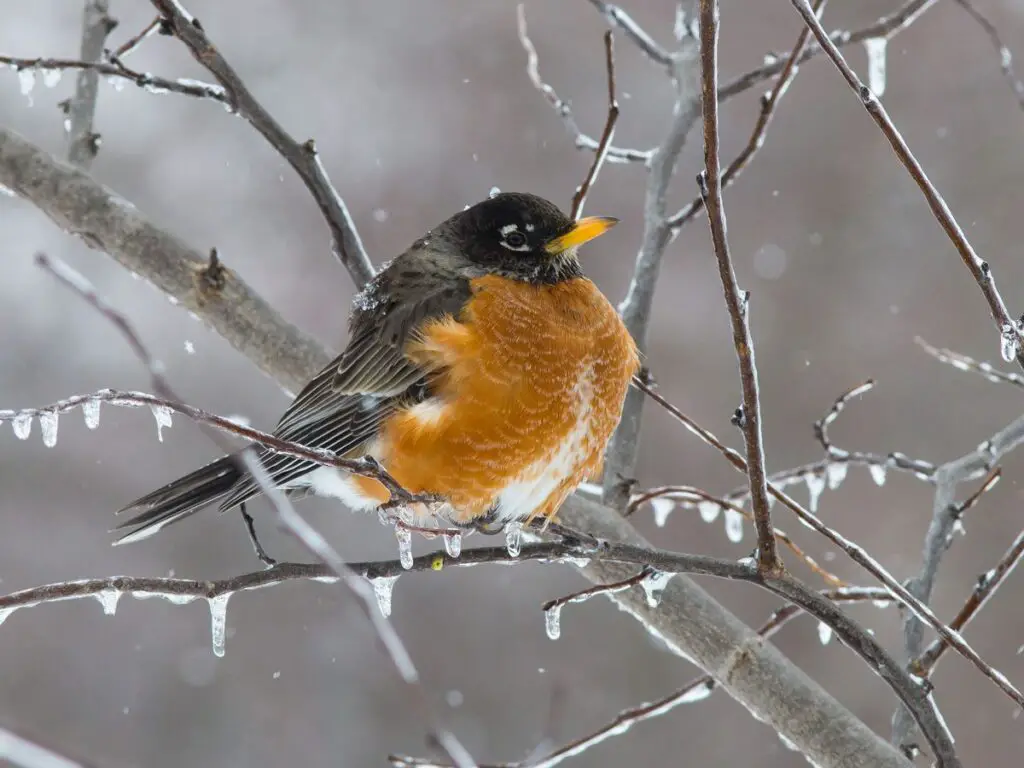
Conclusion
Some robins do undertake long-distance migrations, flying south to escape the harsh northern winters. These individuals embark on arduous journeys, traveling hundreds or even thousands of miles to find more temperate climates. Their destinations vary, from the southern United States to Mexico and even as far south as Central America. For these migratory robins, winter is a time of movement and exploration, as they search for food and favorable conditions to survive until spring.
However, not all American Robins migrate south. Many robins remain in their breeding regions throughout the winter, adopting a more sedentary or nomadic lifestyle. They rely on alternative food sources, such as berries and fruit, to sustain themselves when insects become scarce. These resident robins face the challenges of cold temperatures and limited food availability, but they have evolved physiological and behavioral adaptations to endure these conditions.
Understanding the winter habits of robins provides valuable insights into the broader world of avian migration. It underscores the diversity of strategies that different bird species employ to deal with seasonal changes, demonstrating the intricate interplay between genetics, physiology, and environmental factors.

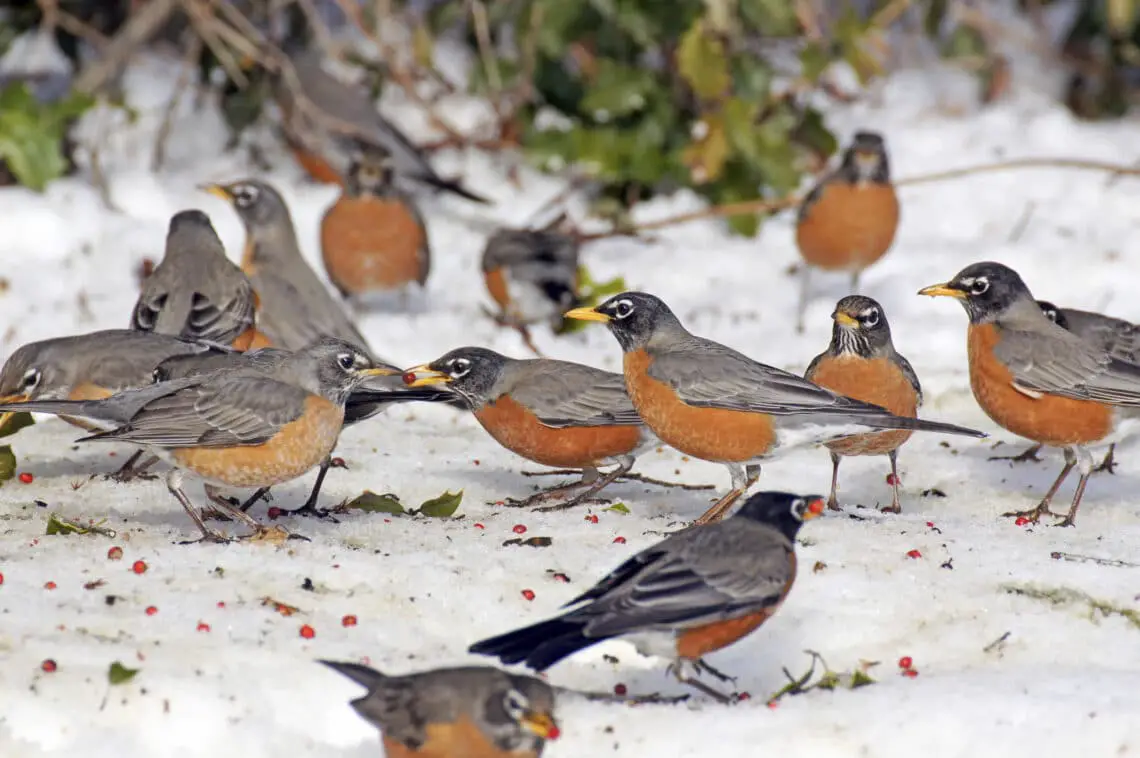
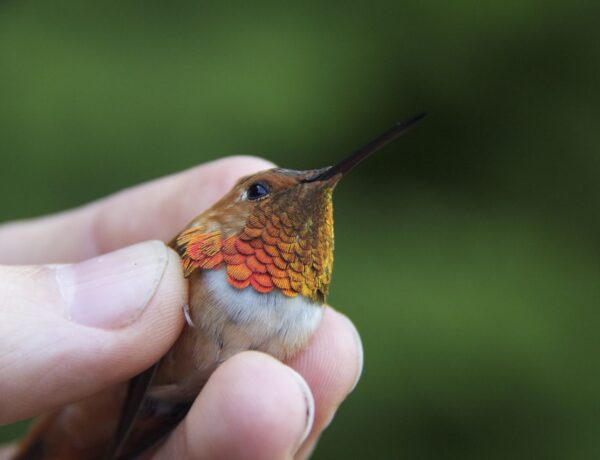
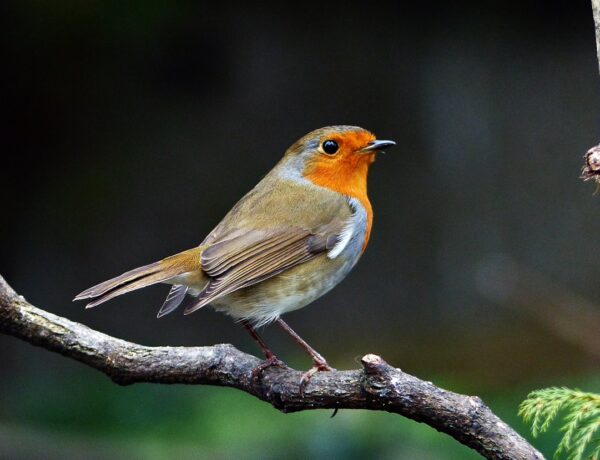
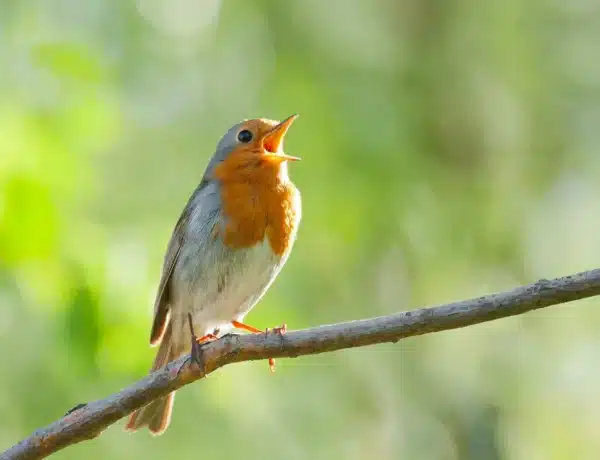
No Comments